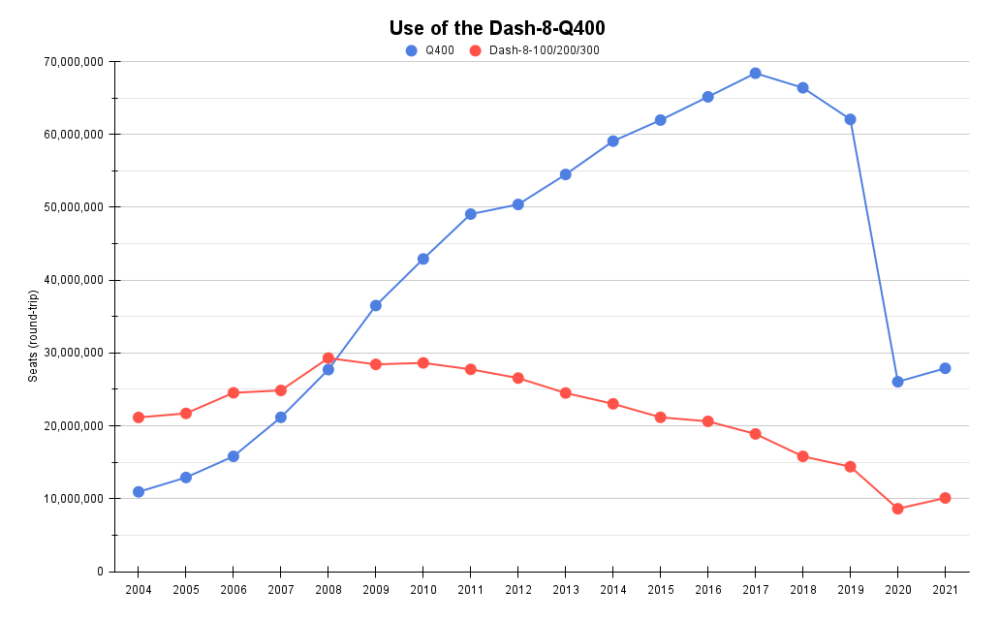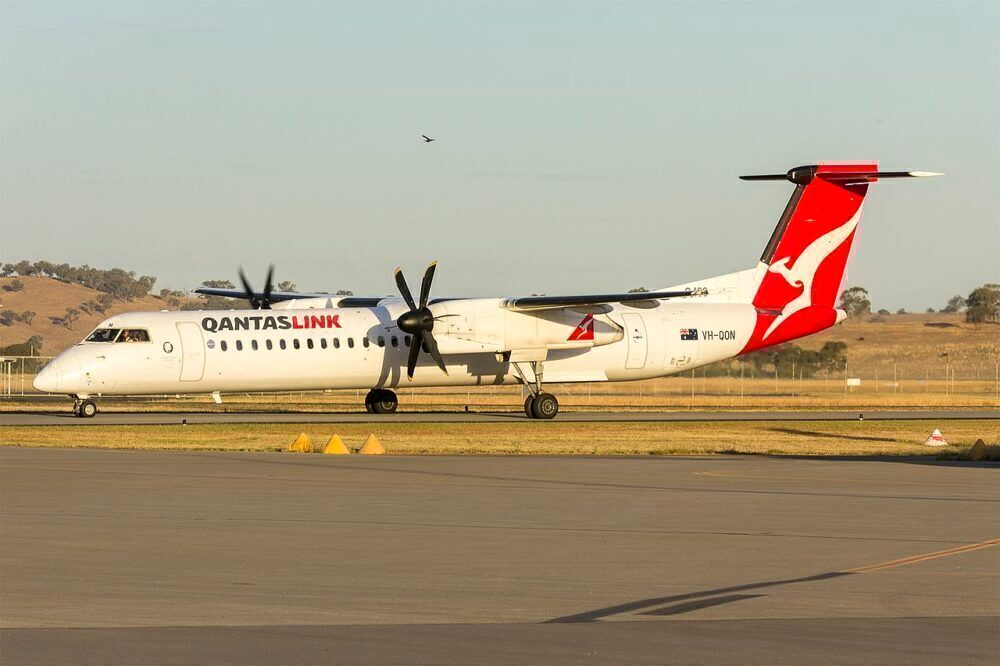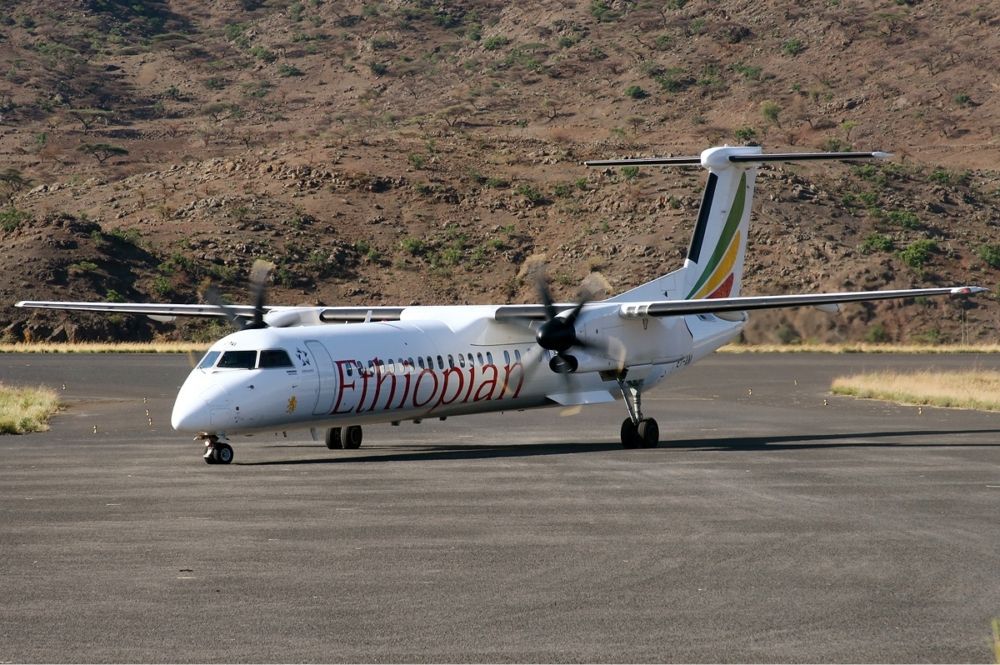Famed for high speed, strong operating performance, and operational versatility, seats for sale by the Dash-8-Q400 have totaled 759 million since 2004. Over 2,500 routes have seen the type since then, and we look into the world's longest.
Development of the Dash-8-Q400
In the 17 years to 2021, the Dash-8-Q400 has had over 10 million round-trip flights and 759 million seats available for sale, analyzing the schedules of all airlines indicate. To put that into perspective, the type has had just ~1% of all seats worldwide by all aircraft.
The 759 million means the Q400 had almost twice as much capacity as all other Dash-8 variants (-100/200/300) put together. However, it has fewer seats than the alternative prop, the ATR-72 (of all variants), although the ATR-72 has, of course, existed for much longer.
A median distance of 354 miles
The Dash-8-Q400 has been used on more than 2,500 routes since 2004, a figure which includes fairly large numbers of one-off and time-limited services, such as Birmingham to Cork (Flybe; until 2004), Damascus to Amman (Royal Jordanian; 2005-2007), and the 714-mile link from Los Angeles to Gunnison, Colorado (Alaska; 2015-2017).
Stay aware: Sign up for my weekly new routes newsletter.
Across these 17 years, the median route length was 354 miles. And curiously, this has changed only slightly year on year (2004: 350 miles; 2019: 330). The type's most-served airport-pairs in this period – led by Toronto City to Montreal, Portland-Seattle, Seattle-Portland, Toronto City-Ottawa, and Canberra-Sydney – are all between 147 and 307 miles.
But, there have been many long routes
This discussion of non-stop distance somewhat misses the point. For why the median is relatively low – as you'd expect – there are and have been large numbers of much longer routes. Indeed, 400+ over 750 miles and 40 over 1,000 miles have seen the type to some extent.
If the whole 17-year period is examined, the 1,544-mile link from Johannesburg to Angola's capital Luanda was the longest scheduled by South Africa's CemAir. But like most in the top-10, shown below, it had very limited service – in fact, just one flight. Notice the predominance of domestic Russian services, mainly in Siberia, and Porter's long Ottawa to Melbourne, Florida, operation for winter sun.
- Johannesburg-Luanda: 1,544 miles
- Anadyr-Yakutsk: 1,464
- Krasnoyarsk-Yatursk: 1,366
- Khabarovsk-Mirny: 1,245
- Khabarovsk-Ulan-Ude: 1,245
- Krasnoyarsk-Neryungri: 1,229
- Mirny-Novosibirsk: 1,227
- Ottawa-Melbourne (Florida): 1,219
- Yaktusk-Petropavlovsk: 1,216
- Abidjan-Dakar: 1,104
Most flights over 1,000 miles
While not quite making into the top-10 longest routes, the most-served 1,000-mile-plus airport-pair was Ethiopian Airlines' Addis Ababa to Dar Es Salaam, 1,090 miles away.
Operating between 2010 and 2019, it had almost 1,900 flights in all with a block time of up to three hours and a half hours (!). Not surprisingly, the type was normally deployed on the lower-demanded overnight service to/from Tanzania, returning to feed Ethiopian's departures across Africa.
Such long routes are obviously very much into jet territory – specifically focused on in the Q400's design stage – indicating the type's fast speed, although it is nonetheless sub-optimal. Importantly, it also indicates how it can operate many types of mission should it be needed given an airline's network, nature of demand, revenue per mile, and other aircraft in its fleet.
What are your experiences of the Dash-8-400? Let us know in the comments.




